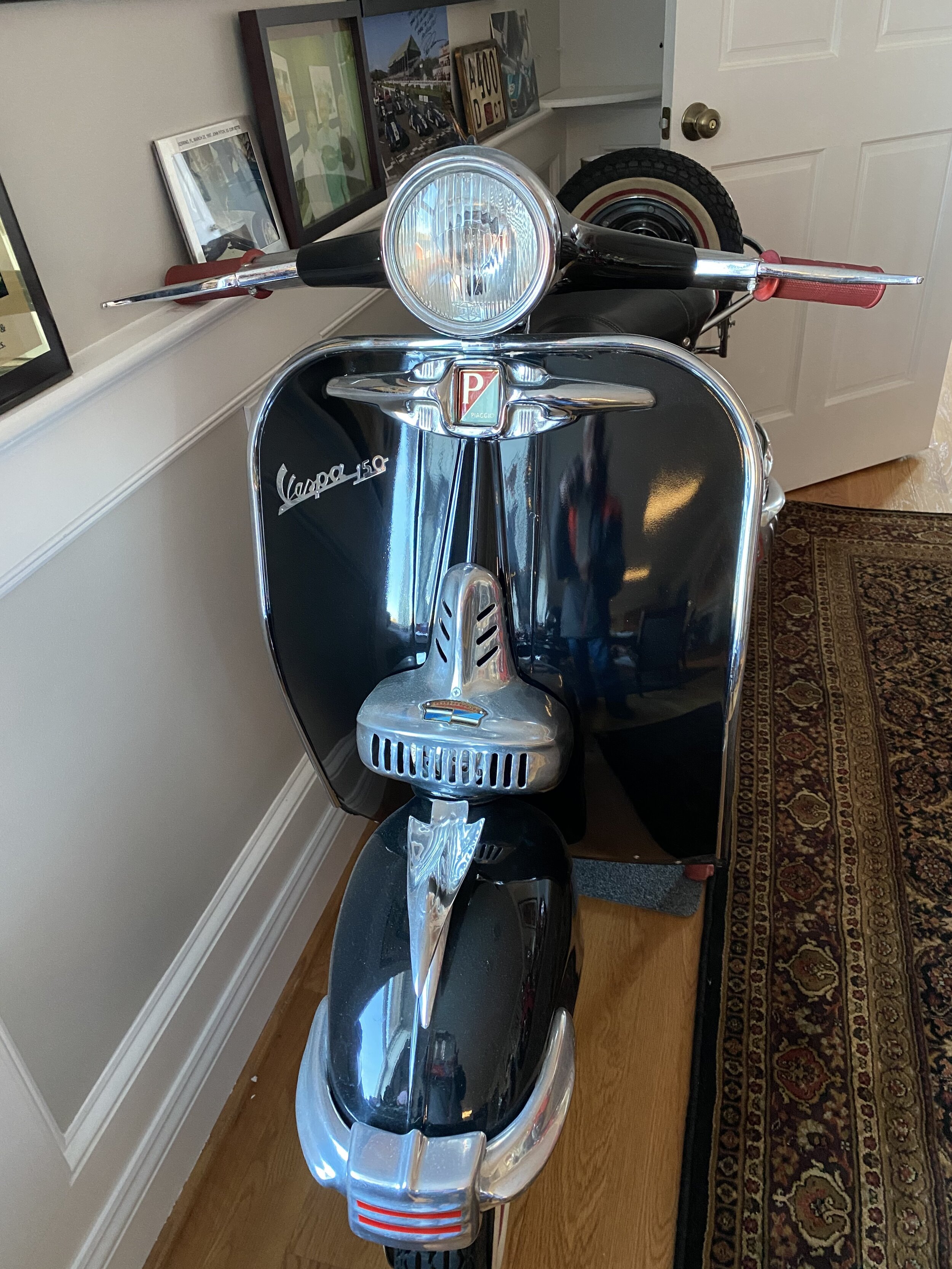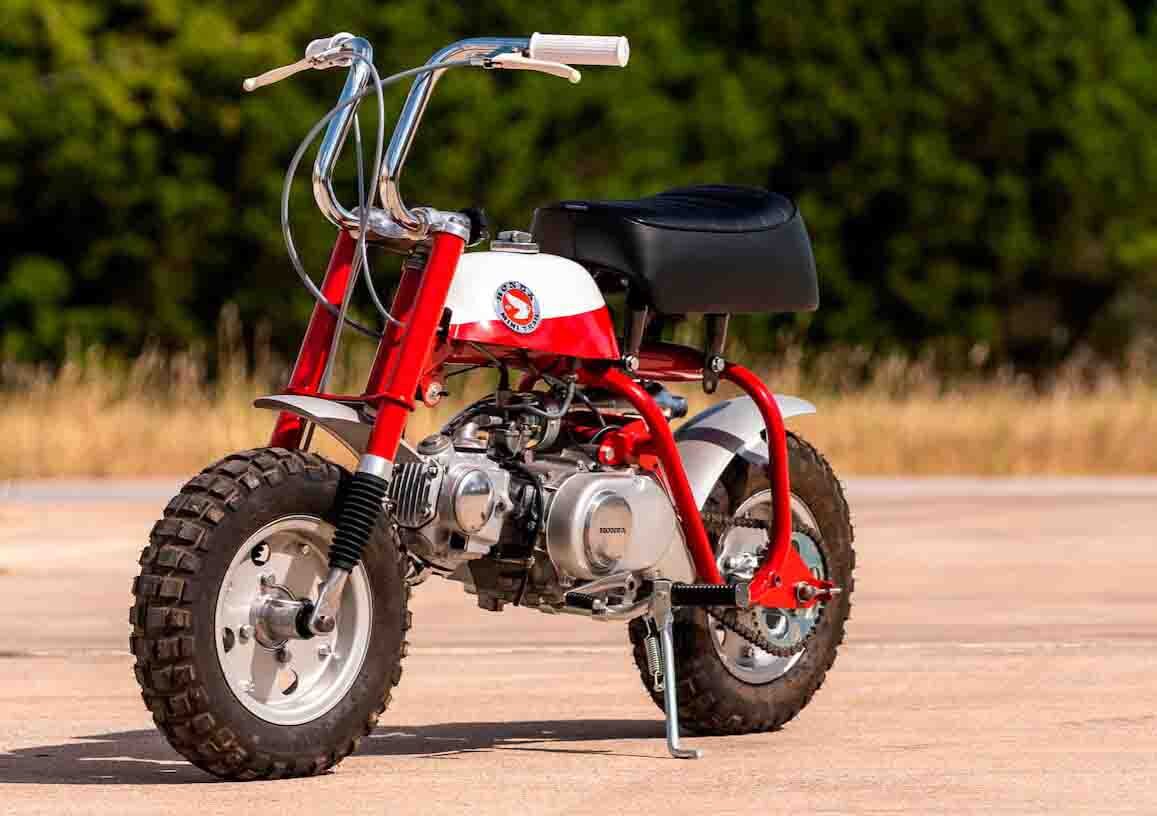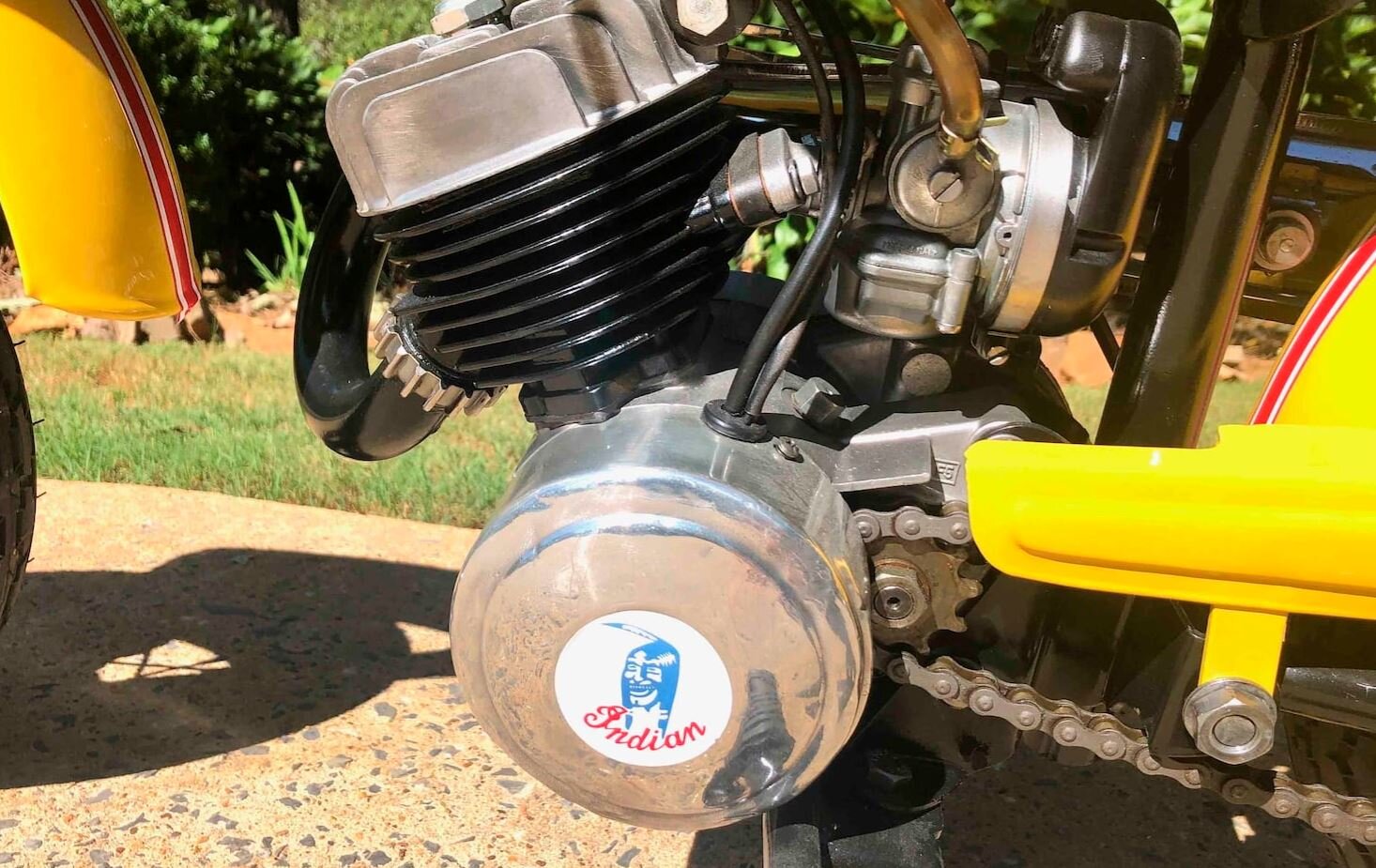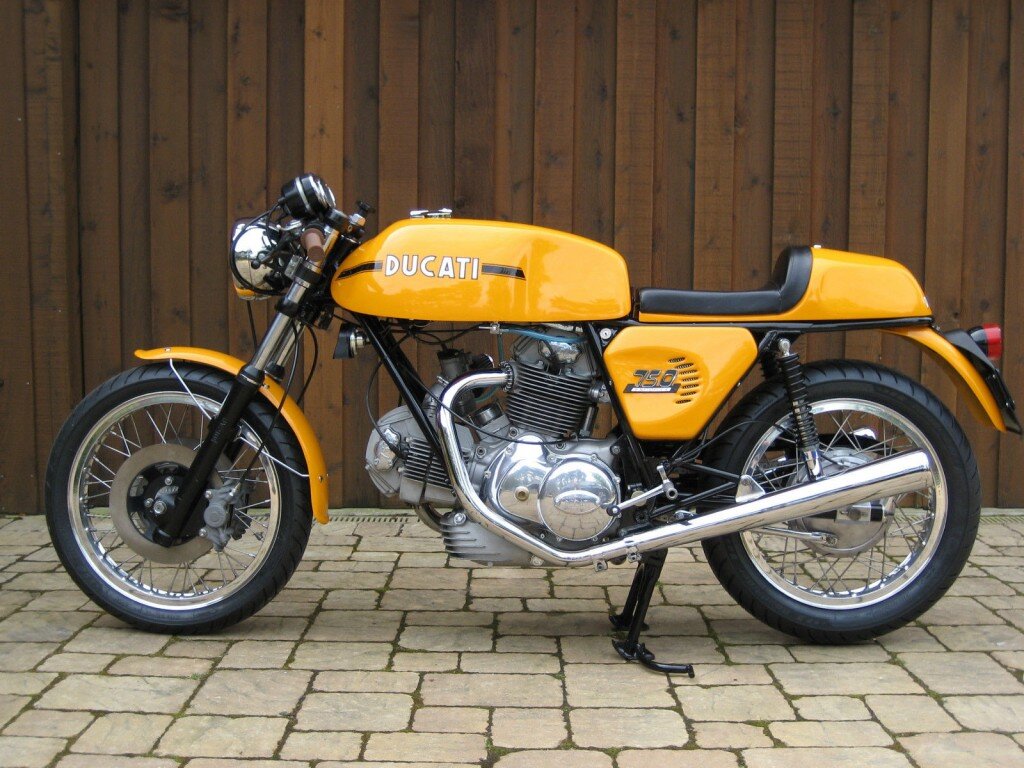Scooters and Small Displacement
Scooters became commonplace in societies around the world shortly after World War II. With a significant lack of raw materials, companies in Europe shifted gears to focus on cheap, reliable and effective transport for the masses. Two Italian companies, Piaggio and Innocenti, began producing simple yet brilliant scooters almost immediately as dust settled after the war.
By 1950, Piaggio was selling more than 60,000 Vespa scooters a year in Europe, transporting everyone from delivery people to students. The Vespa utilized a monocoque design, while Lambretta chose a more complicated and more expensive tube frame chassis. Other European and American companies attempted to capitalize on the growing scooter market, though from a styling perspective, Italy was ahead by a long shot. Today these highly charismatic and historically important vehicles are converted by collectors worldwide, they regularly appear in advertisements for perfume, clothing, holidays, makeup and so on, and you'll see them in store-front displays and in the movies, just as they were in period.
If you grew up in the 1960’s, you are probably familiar with the mini trail bikes in this section. While not legal on the road, minibikes were some of the best toys available in the 60’s. Honda originally produced the Z-Series of minibikes for use at a Japanese amusement before it was put into production in the mid-1960’s. While great toys, these minibikes now provided families the opportunity to explore together, as now kids of all ages had bikes they could ride. Many young riders who rode minibikes such as the Honda Mini Trail 50, often graduated to higher performance bikes as they grew older, and more often than not, became a motorcycle enthusiast for life.
CLICK THE NAMES BELOW TO READ MORE
+ 1965 Vespa VBA 150
The first Vespa (Italian for “wasp”) appeared on the roads of Italy less than a year after the end of World War II in 1945. Designed by aircraft producer Piaggio, the Vespa was intended to provide economical, low-cost personal transportation. More than seventy years later, the Vespa remains an icon of Italian design and is instantly recognizable as the world’s most popular motor scooter. The designer’s brief was simple: develop a two-wheeled vehicle that would be comfortable and easy to ride, with the engine hidden from view. The project was led by Corradino D’Ascanio, and aviation engineer who was no fan of motorcycles and determined to come up with something different. He chose the cover the engine completely and position it out of the rider’s way, as it would be in a car. The single-fork front suspension was taken from aircraft undercarriage design. And instead of a traditional frame, he opted for a load bearing ‘monocoque’ design, again following modern aircraft construction methods.
The Vespa displayed here is a fully restored VBA model, produced from 1958 to 1967. Originally equipped with a single saddle, a popular option was a second passenger’s saddle or pad attached to the luggage rack. My riders liked to customize their scooters and this model is fitted with various accessories typical of the period.
Vespa scooters were produced under license in several overseas countries, including the UK, Germany, Spain and India. Basic versions were also sold by Sears department stores under the “Allstate” brand. Sears-supplied Vespas were usually one or two years behind the Italian Vespa in terms of development, being supplied in only one color and with simple, undamped front suspension. When Vespa introduced a 4-speed gearbox the Allstate version retain the older 3-speed transmission.
Specifications:
- 148cc single-cylinder
- fan-assisted air-cooled two-stroke motor
- 3-speed transmission
- 120mpg
- 55mph top speed
+ 1955 Schwinn Whizzer
First introduced as a kit and later as a whole bike, the Schwinn Whizzer is one of the best examples of 1940’s ingenuity, offering cheap, fun transportation in a new way. Since their establishment in 1895, Schwinn has been one of the top bicycle makers in the world, though until the late 1930’s, made nothing except bicycles. That changed in 1939 when Breene-Taylor introduced their Whizzer Model D bicycle motor. For just $55, bicycle owners could purchase a complete kit to mount the Whizzer engine onto their bicycle.
The air-cooled, four-cycle engine was capable of about 1.5 horsepower and was sold along with a 2/3 gallon fuel tank when first released as a kit. When World War II got underway, Whizzer needed to lobby the United States government for the right to continue producing their engines The company convinced the government that the Whizzer was a great way for defense workers to travel to and from work, leading the company to release the “New Model” engine, for defense workers only.
Beginning in 1949, Schwinn marketed their complete motor-bicycle, the “Pacemaker” for the first time. Schwinn marketed two higher priced models, the Sportsman and the Ambassador for $250, and the engine kit with no bicycle for $110. These remained popular until the mid-1950’s, selling more than 150,000 engines in total.
+ 1959 Lambretta Li 150 Series 1
At end of World War II (1945), Europe desperately needed cheap and economical transport to mobilize its citizens. In Italy, the development of the motor scooter provided the answer and two brands, Vespa and Lambretta, quickly dominated the market.
The Lambretta Li 150 Series 1 displayed here was manufactured by Innocenti, an Italian machinery works. This machine was the subject of a full, concours-standard restoration and is authentic down to the last detail, including the Ruby Red and Gray Dawn color scheme.
Launched in April 1958, the Lambretta Li 150 replaced the earlier LD Series and was an instant hit with the buying public. The stylish bodywork completely enclosed the motor, transmission and even the control cables, keeping oil, grease and road dirt off the rider.
Scooters became very popular with a new generation of riders, especially those who had little interest in traditional motorcycles and simply wanted to easily get around traffic-jammed European cities. Many owners wanted to customize their scooters, leading to numerous accessories becoming available – spare wheel carriers, seat covers, luggage, windshields – as well as high-performance engine tuning parts. The Lambretta quickly became a ‘60s style icon, matched only by their competitors, Vespa. Dozens of other manufacturers attempted to join the scooter boom, but none of their offerings were as successful. In 1960s Britain, two conflicting youth subcultures emerged. The leather-clad ‘Rockers’ rode stripped-down British ‘café racer’ motorcycles; the clean-cut ‘Mods’ rode accessorized scooters. In the summer of 1964, the two groups clashed at seaside towns along the south coast, causing riots and outrage in the press, as well as with the British public.
Specifications:
- 148cc single-cylinder two stroke motor
- fan-assisted air cooling
- 4-speed transmission
- 60mpg
- 85mph top speed
+ 1968 Honda Z50 Mini Trail
The Honda Mini Trail 50 was Japan’s first effort to cash in on the mini-bike craze that swept the US in the 1960’s. Honda had widespread success with their 49cc 4 cycle OHC engine with an integrated semi-automatic 3 speed gear box on the street with the popular C100 Cub street bike and the dual purpose C105 Trail bike. In the initial US release, Honda adapted it to single backbone small off-road frame. Easy to ride due to the centrifugal clutch, the Z50 was far more refined than other small motorcycles of its day, with features like folding handlebars to make transporting the bike much easier. When families who had embraced Honda’s “Nicest People on a Honda” ad campaign went shopping for a motor bike for their youngsters, the Mini Trail 50 was an obvious choice.
This first year Z50 K0 model has front suspension but lacks any rear shock absorbers. Gear shift was a foot lever and the bike featured front and rear drum brakes operated by handlebar mounted levers, like that on a bicycle. Compared to single speed mini-bikes that utilized converted lawn mower engines, the Mini Trail offered a three speed gear box that suited a wider variety of off-road conditions and rider sizes. It was quiet, reliable and had the support of a growing Honda dealer network. Because a full-size adult was cramped and hunched over while riding the bike, the Z50 became known as the “Monkey” or “Gorilla” bike due to the simian posture required to ride it.
In 1969, Honda introduced the Z50A, adding front and rear lighting making the bike street legal in most states. Later models added rear suspension to the Mini Trail but the bike remained unchanged through 1978 when it reverted to the Z50R model, an off road only version that mimicked the look of the Honda Moto-Cross line up.
Specifications:
- Engine displacement: 49cc
- Horsepower: 4.5hp
- Weight: 108lbs dry
- Top Speed: 25mph
- 1968 MSRP: $295
+ 1969 Indian MM5
This Indian MM5 is the smallest Indian ever made. MM5’s were created both to introduce young riders to the world of two wheels, but also as a marketing tool, designed to inject kids with enthusiasm for the brand for years to come. As an option, a set of training wheels was available as well! This MM5 you see here has had an extensive frame off restoration, with only original parts like the tank, fenders and exhaust utilized.
With a top speed of just 12 MPH, parents were assured their son or daughter wasn’t going to attempt any motocross tricks in the backyard. The engine is just 50cc, made by Morini and produces a hefty 1.5 horsepower – plenty for laps around the house. Like a typical motorcycle or dirtbike, the MM5 was equipped with a twist throttle and two handbrakes, one for the front wheel and one for the rear, though the transmission had a single speed with no clutch. For $250, this was one of the most tasteful ways for a child to become engaged with motorcycles at a young age.
Specifications:
- Engine: 50cc by Morini
- Top Speed: 12 MPH
- Horsepower: 1.5
- Miles per Gallon: 200
+ 1970 Honda CT70H
Unlike other minibikes in this section, the CT70H was a bit more mature, serving as one of the best small dual-purpose bikes of the time. While the CT70 could have serve as a children’s introductory bike, they were also able to be registered for road use unlike many minibikes of the time.
The CT70H was an extremely capable off-road motorcycle, with plenty of torque to get riders wherever they needed to go. These bikes were distinguished by their pressed-steel “T-Bone” frame, equipped also with folding handlebars. The five-horsepower engine sent power to the rear wheels with a four-speed manual transmission, which differed from other minibikes of the time which often came equipped with an automatic transmission so children could more easily enjoy. The bike weighs just 143 lbs, and with the handlebars folded, it also fit in most cars’ trunks – especially in the 1970s.
Specifications:
- Engine: 70cc Single-Cylinder, Four-Stroke
- Top Speed: 40 MPH
- Horsepower: 5 @ 8000 RPM
- Transmission: Four-Speed-Manual
+ 1972 Ruttman Minibike
The Ruttman represents one of the most simple and easy motorbikes for young kids to enter the hobby. Ruttmans were sold at sporting good stores, offering off-road ability at a young enthusiast level. Our curator, David de Muzio, was introduced to the world of motorcycles with a Ruttman.
Ruttman began producing minibikes in the early 1960’s in Dearborn, Michigan. These minibikes were equipped with a 3.5 horsepower lawnmower engine and marketed many of the same highlights as full sized dirt bikes did. Chrome fenders, steel wheels, knobby tires, and ‘GT Grips’ were all part of the sales pitch, on a micro scale of course. All Ruttmans were equipped with automatic transmissions. Unlike any other minibike manufacturer, Ruttman offered a ski kit for their minibikes, a single ski that replaces the front wheel if the rider desired to attack deep snow!
+ 1974 Honda MR50 Elsinore
Inspired by the success of the two-cycle purpose built Honda Elsinore 125 and 250 Moto-Cross models introduced a year earlier, Honda released a miniature 49cc version of the race bike to address the growing number of aspiring youth racers. The bike on display is a fully restored example using all original Honda parts including plastic fenders, wire spoke wheels, knobby tires, and re-covered seat. The engine has a wet clutch and 3 speed transmission actuated with a foot lever with neutral at the bottom and 3 gears reached by upshifting. Gas and oil were premixed for the air cooled 2 cycle piston port engine and the exhaust pipe was outfitted with a spark arrestor making it legal to ride in forested areas. The Keihin carburetor incorporated a parent friendly “governor” screw when engaged would limit the travel of the carburetor slide to control top speed of the machine. The bike had a improved suspension over the 50cc Mini-Trail Z50A and had the look and feel of a real competition motorcycle.
The red fender and tank’s red paint scheme was different from the larger bikes in the Elsinore family and in 1975, Honda was to offer the MR50 in a similar silver with red stripe colors of the bigger bikes.
The MR50 would only last two model years as Honda concentrated on sales of the more versatile XR75 4 cycle machines. Mini racers from other marques such as Yamaha, Suzuki and Indian produced 80cc which became the defacto class for your MX racing. It would be 1985 before Honda would return with a purpose-built youth 2 stroke Moto-Cross bike, the CR85 Expert.
Specifications:
- Engine Displacement: 49cc
- Horsepower: n/a
- Weight: 94lbs dry
+ 1983 Yamaha Chappy
The Yamaha Chappy was produced by Yamaha with two different engine sizes, 50cc and 72cc. Chappys were very popular here in Newport in the 1970’s, with many sold out of the old Yamaha motorcycle dealership near Washington Square. If you keep an eye out, you will often see Newport’s former mayor, Harry Winthrop, riding around town on his own personal Chappy! This example has been loaned to the museum from Paul Murphy, who bought this Chappy from its first owner in Oklahoma City, and has had 12 Chappys throughout his life!
Like other small trail bikes in this section, the Chappy was Yamaha’s answer to the publics call for cheap, easy to maintain, all-in-one transportation. These bikes were road legal and came equipped with a two-speed automatic transmission with high and low gear selector. Many owners used these on the street, while others utilized them for trail riding.
From the collection of Paul Murphy

































